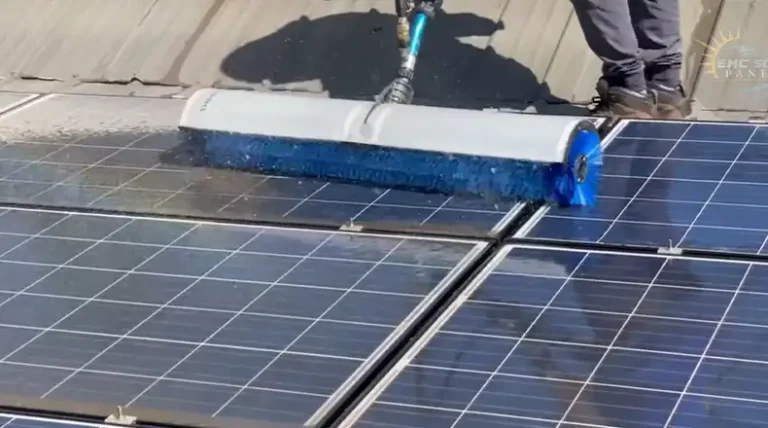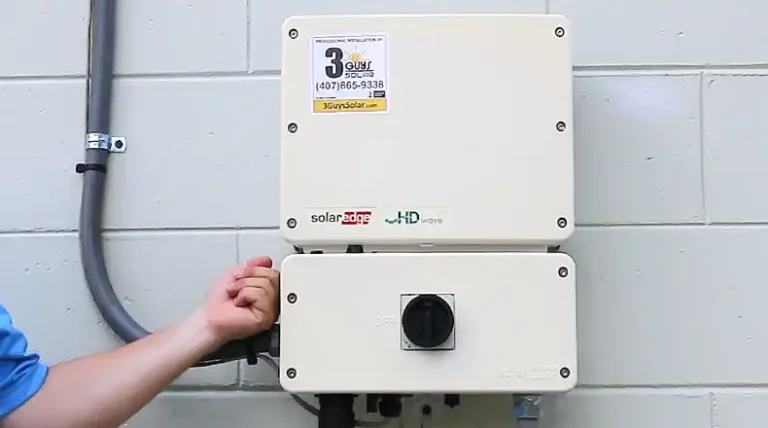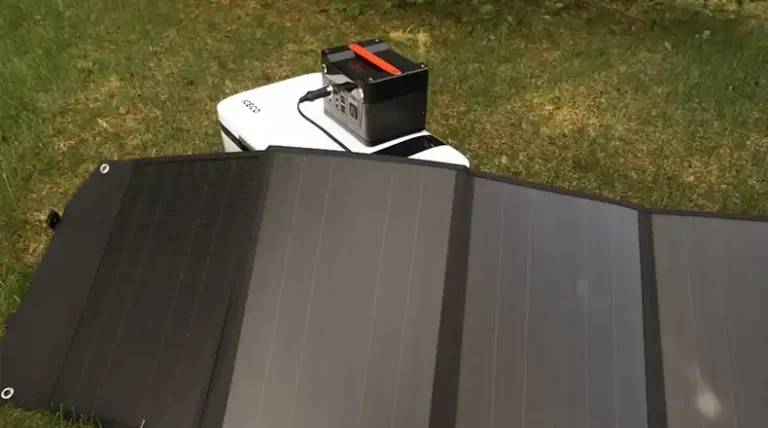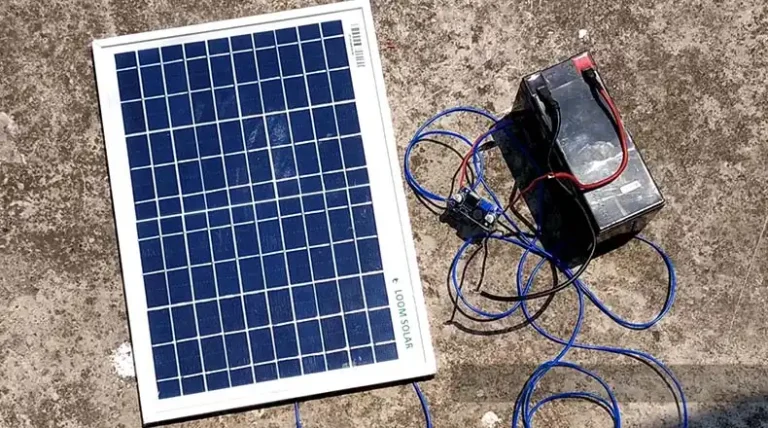What Will a 45-Watt Solar Panel Run? Examples and Applications
A 45-watt solar panel is a compact and affordable solar energy system that can power a variety of low-power devices and appliances. With the increasing popularity of renewable energy sources, understanding the capabilities of a 45-watt solar panel can help you make informed decisions about your energy needs.
In this article, you’ll find what a 45-watt solar panel can run, provide practical examples, and offer tips on maximizing its potential.
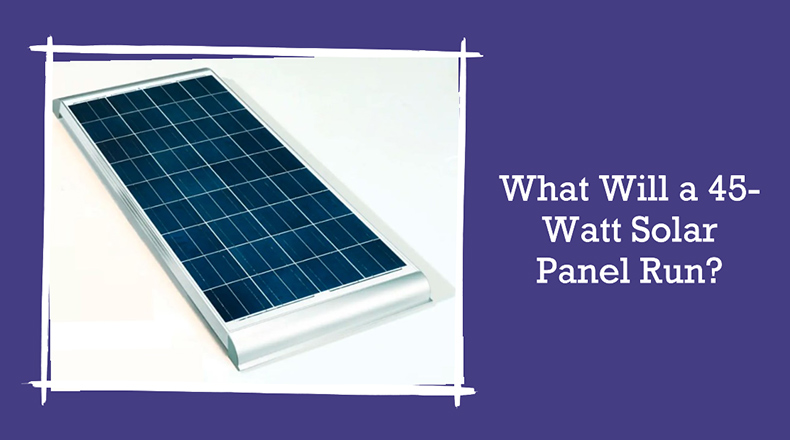
What’s the Power Output of a 45-Watt Solar Panel
The power output of a solar panel depends on several factors, including sunlight intensity, temperature, and panel efficiency. A 45-watt solar panel typically produces around 45 watts of power under peak sunlight conditions (1,000 W/m²). However, in real-world conditions, the average daily energy production can vary based on your location and climate.
Here’s an estimate of the average daily energy production of a 45-watt solar panel in different regions:
| Region | Average Daily Energy Production (kWh) |
| Sunny (Southwest US) | 0.27 – 0.36 kWh |
| Moderate (Midwest US) | 0.18 – 0.27 kWh |
| Cloudy (Northwest US) | 0.09 – 0.18 kWh |
What Types of Devices a 45-Watt Solar Panel Can Run
A 45-watt solar panel is well-suited for powering low-power devices and appliances. Here are some examples of devices that can be run by a 45-watt solar panel:
- LED lights
- Fans
- Radios and speakers
- Phones and tablets (for charging)
- Small appliances (e.g., coffee makers, blenders)
It’s important to note that the number of devices a 45-watt solar panel can run simultaneously depends on their individual power consumption.
How Solar Power Consumption Works
To determine what a 45-watt solar panel can run, you need to understand the power consumption of the devices you plan to use. Power consumption is typically measured in watts (W) and is calculated by multiplying the voltage (V) and current (A) of a device.
Power (W) = Voltage (V) x Current (A)
For example, a 12V device that draws 1A of current would consume 12 watts of power (12V x 1A = 12W).
How to Calculate Power Requirements
To calculate the power requirements of a device, follow these steps:
- Find the voltage and current ratings of the device (usually listed on the device or in the user manual).
- Multiply the voltage and current to find the power consumption in watts.
- Compare the power consumption to the output of your 45-watt solar panel.
If the power consumption of a device is less than or equal to 45 watts, the solar panel can theoretically run it. However, it’s always a good idea to have a safety margin and account for any power losses or inefficiencies in the system.
Here’s an example of calculating the power requirements for a few common devices:
| Device | Voltage (V) | Current (A) | Power Consumption (W) |
| LED light bulb | 12V | 0.5A | 6W |
| Laptop (charging) | 19V | 1.6A | 30.4W |
| Small refrigerator | 120V | 0.5A | 60W |
In this example, the 45-watt solar panel can run the LED light bulb and charge the laptop, but it may struggle to power the small refrigerator on its own.
Battery Storage and Inverters for 45-Watt Solar Panel
To extend the usability of a 45-watt solar panel and run devices when the sun isn’t shining, you’ll need a battery storage system. Lead-acid or lithium-ion batteries can store the energy generated by the solar panel during the day, allowing you to use it at night or during cloudy conditions.
If you plan to run AC devices (devices that plug into a standard wall outlet), you’ll also need an inverter. An inverter converts the DC (direct current) electricity produced by the solar panel into AC (alternating current) electricity that can power your household appliances.
Practical Applications and Examples
A 45-watt solar panel has a variety of practical applications, including:
- Camping and Outdoor Activities
- Powering LED lights, fans, and charging devices like phones and cameras
- Running small appliances like a coffee maker or blender
- Remote Cabins or Off-Grid Living
- Providing basic lighting and power for small electronics
- Charging batteries for backup power
- Emergency Backup Power
- Keeping essential devices charged during power outages
- Running lights, fans, and radios in case of emergencies
- Charging Stations for Electronic Devices
- Setting up charging stations for phones, tablets, and laptops in public spaces
- Providing power for mobile workstations or outdoor events
Limitations and Considerations
While a 45-watt solar panel can power a variety of low-power devices, it has limitations when it comes to running high-power appliances or multiple devices simultaneously. Here are some important considerations:
- Shading: Ensure that your solar panel is positioned in an area with minimal shading, as even partial shading can significantly reduce its output.
- Panel Orientation: For optimal performance, position the solar panel to face the sun directly, adjusting the angle as the season and sun’s position changes.
- Battery Capacity: If you plan to use the solar panel with a battery storage system, ensure that the batteries have sufficient capacity to meet your energy demands.
- Efficiency Losses: Account for potential efficiency losses due to factors like cable resistance, inverter inefficiencies, and battery charging/discharging cycles.
Upgrading and Expansion Options for 45-Watt Solar System
If your energy needs exceed the capabilities of a single 45-watt solar panel, you can consider upgrading or expanding your system. Here are some options:
- Adding More Solar Panels: Connecting multiple solar panels in parallel or series can increase the overall power output of your system.
- Combining with Wind Turbines: Integrating a small wind turbine with your solar panel system can provide additional energy generation, especially during periods of low sunlight.
- Upgrading to a Larger Solar Panel: If your energy demands grow significantly, you may need to upgrade to a higher-wattage solar panel or a complete off-grid solar system.
Final Words
A 45-watt solar panel is a versatile and eco-friendly solution for powering low-power devices and appliances. By understanding its capabilities, calculating power requirements, and implementing proper battery storage and inverter systems, you can maximize the potential of your solar panel. Whether you’re camping, living off-grid, or seeking an emergency backup power source, a 45-watt solar panel can be a valuable addition to your energy arsenal.
FAQ
Can a 45-watt solar panel run a refrigerator?
It’s unlikely that a single 45-watt solar panel can run a standard household refrigerator on its own. Most refrigerators consume between 100 and 400 watts of power, which exceeds the output of a 45-watt solar panel. However, you may be able to run a small, energy-efficient refrigerator or cooler with the help of a battery storage system and proper energy management.
How long can a 45-watt solar panel power a laptop?
The duration for which a 45-watt solar panel can power a laptop depends on the laptop’s power consumption and the available sunlight hours. On average, a 45-watt solar panel can provide enough power to charge a laptop for 2-4 hours per day, assuming the laptop consumes around 30 watts while charging.
Can I run a TV with a 45-watt solar panel?
Most modern TVs consume between 60 and 200 watts of power, which exceeds the output of a single 45-watt solar panel. However, you may be able to run a small, energy-efficient TV or monitor with the help of a battery storage system and an inverter.
How many LED lights can a 45-watt solar panel power?
The number of LED lights a 45-watt solar panel can power depends on the power consumption of each light bulb. Typical LED bulbs consume between 3 and 10 watts of power. A 45-watt solar panel could power around 4-15 LED bulbs simultaneously, depending on their wattage.
Can I use a 45-watt solar panel to charge an electric vehicle?
No, a 45-watt solar panel is not powerful enough to charge an electric vehicle efficiently. Electric vehicles typically require charging rates of several kilowatts, which is far beyond the capabilities of a 45-watt solar panel. However, you could use a larger solar panel array or combine multiple solar panels to help offset some of the charging needs for an electric vehicle.

